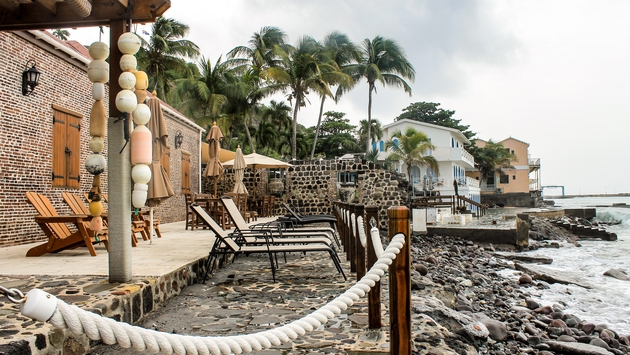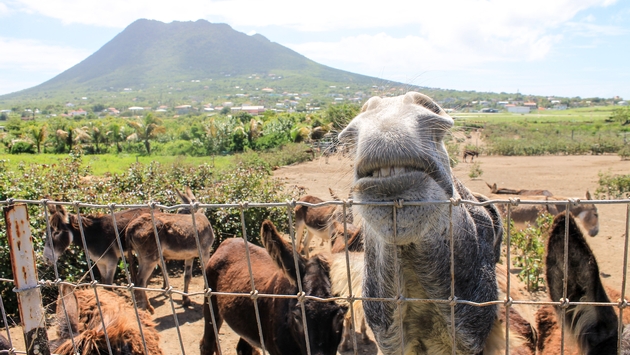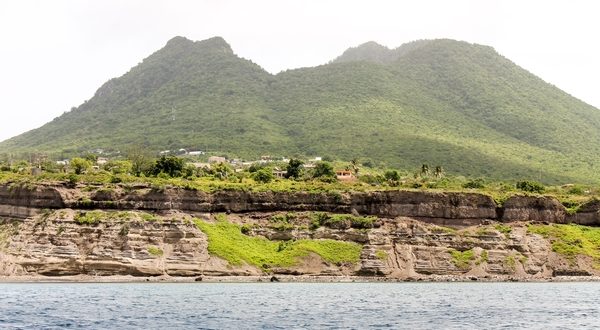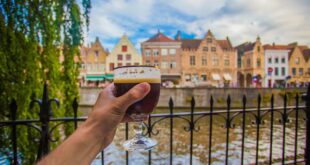[ad_1]
Not many American tourists make it to, or have even heard of, St. Eustatius, an eight-square-mile island in the Dutch Caribbean. Yet dive enthusiasts and frequent Caribbean travelers looking for something different may be surprised at how easy it is to get in step with this history-rich Caribbean idyll, located between St. Kitts and St. Maarten.
English is the most commonly spoken tongue, though Dutch is the official language, and the standard currency is the U.S. dollar. The airport, F.D. Roosevelt, is named for the United States’ 32nd president.
Locals on Statia, as the island is known to its 3,200 residents, celebrate a kinship with the U.S. dating to the 18th century, when St. Eustatius was home to the Caribbean’s busiest and most prosperous trading port. The colonies purchased ammunition and supplies here during the American Revolution, owing to the port’s neutral status, and, with an 11-gun salute to the USS Andrew Doria in November 1776, St. Eustatius offered the first international recognition of the newly-chartered United States.
More than a century and a half later, in 1939, FDR traveled to St. Eustatius to deliver a brass plaque commemorating the gesture, which now hangs among the ramparts and canons at Fort Oranje in the capital of Oranjestad.
Today, Statia has the feel of a land that time forgot. The British, none too happy with local leadership’s chummy relations with the United States, ransacked the place in 1781; an earthquake followed some years later. Collectively, these events ended Statia’s run as a commerce capital.
The 18th-century brick warehouses which once housed the riches of the Dutch West India Company still exist as lonely, wave-battered ruins, lining the shore of Oranjestad’s quiet Lower Town area, reminders of a heyday that earned the island its nickname “The Golden Rock.” Other remnants have been reclaimed by the sea—one reason why St. Eustatius has developed a fervent following in the international diving community.
Unlike most of its Caribbean neighbors, tourism has never been a significant factor in St. Eustatius’ economy. The Dutch government is the largest employer, and U.S. firm NuStar Energy operates a 13-million-barrel oil terminal on the island, circled at all times by tankers awaiting cargo. However, changes are afoot. Holland recently took control of the local government from local leaders, and tourism is likely to play a major role in shaping its future.

The island currently has about 85 hotel rooms, 25 of which have opened in the last three years. The Dutch owners of Knippenga Estate, a posh villa complex in the island’s secluded southwest, recently broke ground on Petit Guyeau, a 40-room hotel expected to open in 2020, boosting the number of keys on Statia by nearly a third.
This year, the modern, eight-room Oranje Bay Hotel opened steps from the island’s three dive shops and Lower Town’s colonial ruins. The operators of The Old Gin House, St. Eustatius’ oldest and best-known lodge—and presently its largest, with 20 rooms—are also eyeing expansion opportunities.
The island’s tourism office, known as the St. Eustatius Tourism Development Foundation, sees an opportunity to position itself as a niche player in the fast-growing, $563 billion wellness travel sector. “Embracing Environmental Health and Wellness” was the focus of St. Eustatius’ annual sustainable tourism conference held in September.
“I believe we have what it takes,” said Charles Lindo, St. Eustatius’ director of tourism. “The first thing we have to start pushing is the tranquility envelope. Come to Statia and unplug. The Internet is here—fast Internet, too—but we prefer you come and unplug.”
Wellness tourism represents “a big opportunity” for St. Eustatius said Sallie Fraenkel, founder and director of the Mind Body Spirit Network, a New York-based wellness travel consulting firm. “Natural resources here are so deep,” Fraenkel said. “You have an amazing antidote to stress being through the roof.”
For a small place—Oranjestad is not only the capital, it’s the island’s only town—Statia boasts a variety of invigorating activities, including 36 dive sites and more than a dozen hiking trails. One headline attraction is The Quill, the dormant, 2,000-foot volcano which lords over the island’s southern half.
From “town,” the summit can be easily reached in under an hour; you’ll want to allow another two hours, however, to explore The Quill’s inner crater, which is home to a spectacular tropical rainforest. The island also holds appeal for birdwatchers, with 32 native species.
“What’s unique is that it’s easy to walk to the birds,” Lindo says. “It’s not a big island where you have to plan to travel to a sanctuary. Having so many species on a little island like this, on any given day, I can see eight to 10 species in my yard.” Three endangered sea turtle species—the leatherback, the green turtle, and the hawksbill—are known to nest on the island and make themselves known to divers.

St. Eustatius can also claim more protected historical monuments per square mile than any other Caribbean island: 119 in total. In Oranjestad’s downtown—“Upper Town”—the remnants of Honen Dalim, the second-oldest Jewish synagogue in the New World, are steps from the recently-restored Fort Oranje, with its stunning overlook of the Caribbean. Two quaint museums, the Berkel Family Plantation and the Simon Docker House, preserve earlier eras of Statian life.
Diving accounts for the majority of the island’s tourist arrivals, which last year numbered about 10,500. Caradonna Adventures, a Longwood, Fla.-based agency specializing in adventure travel, offers seven-night dive packages to St. Eustatius from $1,059 per person.
The island’s entire coastline is under the jurisdiction of St. Eustatius National Parks, known as STENAPA, which enforces stringent rules designed to protect the marine habitat.
Divers can explore more than a dozen shipwrecks in Oranje Bay, many hiding treasures of antique glass, porcelain and other relics like the “blue beads” that once served as currency for the island’s slaves. But they can’t do it alone—the presence of a licensed local instructor is required on all dives.
St. Eustatius’ understandably limited dining scene has also seen some encouraging additions. Whale Tails, a sleekly-designed restaurant at Knippenga Estate, recently opened to rave reviews. On the last Thursday of every month, the stalls outside Mike Van Putten Youth Centre are the site of Taste of the Islands, an international smorgasbord which highlights the surprising diversity of Statia’s populace.
Recent editions have featured vendors serving dishes from Suriname, Montserrat, St. Kitts and Nevis, the Dominican Republic, St. Maarten, Portugal, China and Colombia as well as Statia itself, with all meals going for five bucks.
The barrier blocking St. Eustatius’ tourism sector from further growth is accessibility. At present, the island is serviced by one commercial airline, WinAir. All connections are routed through St. Maarten.
Most tourist arrivals to Statia are from Europe. However, the island has seen a modest increase in visitors from North America over the last three years, Lindo says. For now, that’s just fine. “We don’t want mass tourism anyway. We want to keep it nice and quaint: The Caribbean’s hidden treasure.”
[ad_2]You can read more of the news on source
 Travelsmart
Travelsmart



